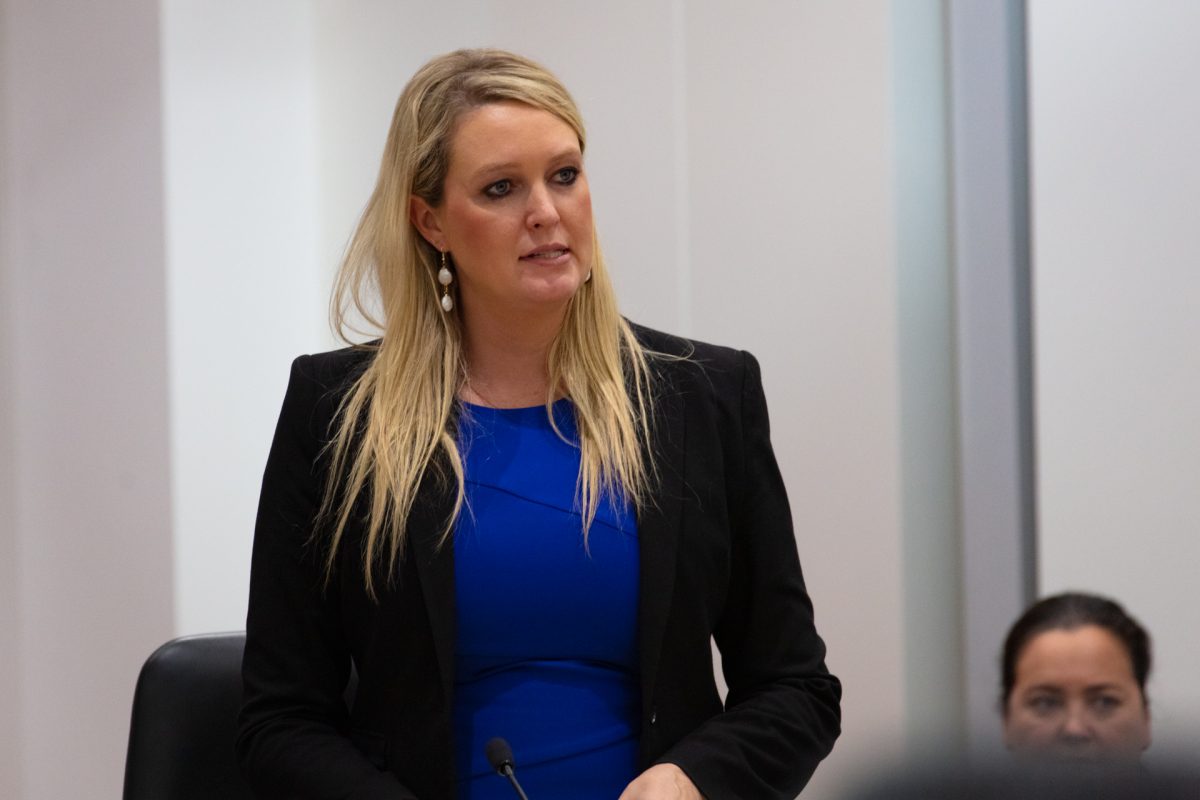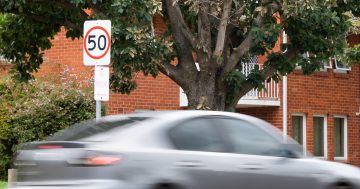
Marisa Paterson MLA presented the report with 37 recommendations on 24 October. Photo: Thomas Lucraft.
An inquiry launched after the dismissal of the ACT Heritage Council has handed down its report to the Assembly, offering a slew of recommendations to improve a system that desperately needs an overhaul.
However, there are concerns this won’t be enough to fix “underlying strategic issues and tensions” within the ACT’s heritage arrangements.
In its report released on Tuesday (24 October), the Standing Committee on Environment, Climate Change and Biodiversity paints a dismal picture of the state of the ACT’s heritage system.
“It is clear to the Committee that the ACT’s heritage arrangements are no longer fit for purpose,” the report said.
“The absence of both a strategy or vision for heritage and clearly defined governance arrangements has led to a lack of clarity on how the different parts of the heritage system are meant to interact and work together, impacting on the effectiveness of those arrangements in protecting and promoting the Territory’s heritage scene.”
The report describes tensions in the relationship between the Heritage Council and the Heritage Unit, brought about by the lack of clear understanding of their roles and responsibilities and the absence of an overarching approach to heritage in the ACT.
Several submissions said this resulted in “gatekeeping” behaviour by the Heritage Unit. Another submission spoke of the Heritage Unit’s “overreach of power and authority and professional arrogance”.
Submissions complained about the “frustrating experience” of dealing with the Heritage Unit, often having to wait a long time to receive a response.
“A number of submissions identified reputational risks for the Heritage Council arising from these delays,” the report said.
Additionally, there were concerns that “onerous heritage conditions” prevented the installation of sustainability features such as solar panels.
“The Committee heard from several submissions and witnesses who were frustrated at what they perceived to be a lack or absence of consideration or recognition in the heritage system towards climate change and sustainability modifications,” the report said.
One witness described the difficulties they faced getting approval to install 15 solar panels on the roof of their house which, while not heritage-listed, is located in a suburb that is a heritage precinct. The Heritage Council only approved six panels, citing the heritage precinct’s requirement for roof elements to be minimally visible from the street. The resident was critical of the decision and said balance needs to be reached between heritage values and sustainability.
The committee gives 37 recommendations aimed at addressing these issues.
These include addressing the structure of governance for ACT’s heritage arrangements, increasing support for the community heritage sector, increasing funding and resourcing for the ACT Heritage Unit, and amending the ACT Heritage Act 2004 to include a definition of Aboriginal cultural heritage that recognises both tangible and intangible heritage.
A dissenting report was filed by Ed Cocks MLA on the basis that the committee report didn’t go far enough.
“While a number of recommendations of the main committee report have merit, taken as a whole, it provides little substantive direction for the government to correct course, and it does not fully contend with a number of the underlying strategic issues and tensions in the ACT’s Heritage system,” Mr Cocks’ report said.
“The main report, in my opinion, doesn’t go far enough in a number of areas,” he told the Assembly on Tuesday.
“It’s based on a notion that tinkering around the edges will be enough to repair an outdated system.”
In the dissenting report, Mr Cocks called for “strong direction and a willingness to take clear decisions” and criticised the government for “seven years of strategic indecision and neglect”.
He said there is also a risk that “the main report could be seen as endorsing unfettered development over heritage considerations”.
“The preponderance of evidence and opinion that I heard throughout this inquiry suggests that an effective heritage system ought to be focused first and foremost on the preservation of heritage and its inherent value,” Mr Cocks said.
“This cannot be achieved by injecting an increasing number of competing non-heritage considerations into that system.”

















